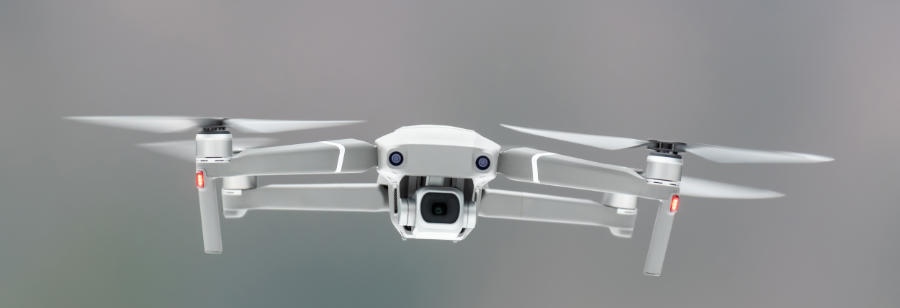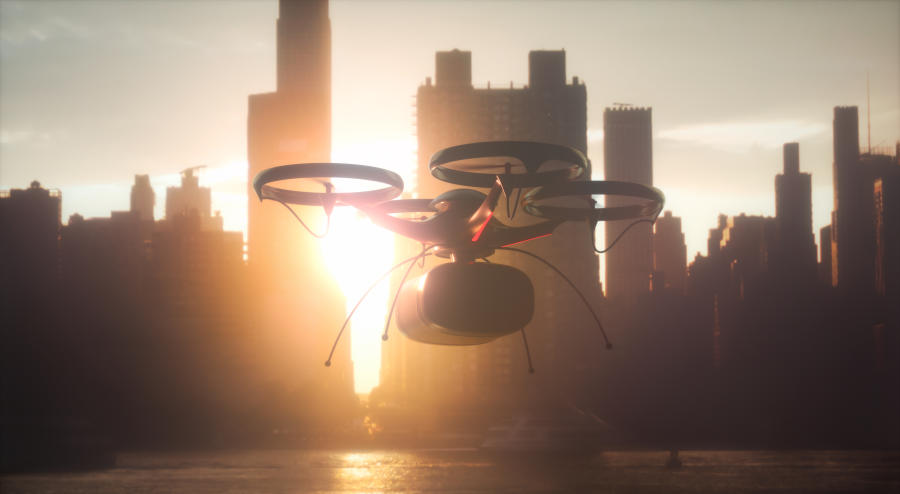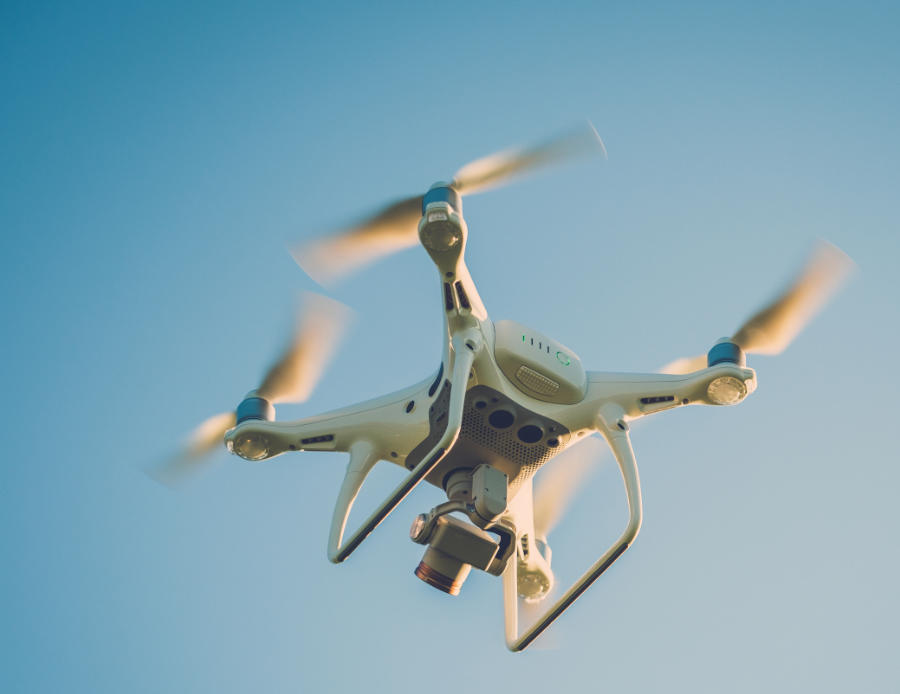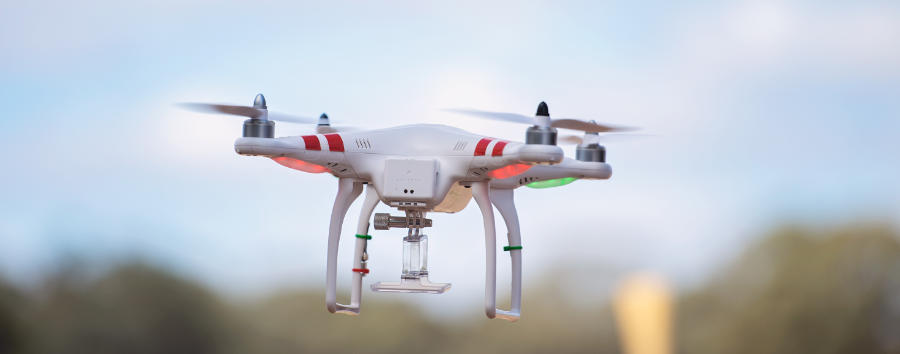The drones for filmmaking industry is booming. There are many drones on the market today that can be used to film professional quality videos, including aerial photography and filming in different locations. However, there are still many aspects to be considered when choosing a drone for your project.

Recreational Use
Recreational drone usage has the most tolerant of laws. However, there are still strict guidelines. Drones can fly recreationally no higher than 400 feet, and the aircraft must remain in sight at all times.
Drones should not be flown over people or moving vehicles and should remain at least 25 feet away from both. It should go without saying, but drones should not fly within 5 miles of any airport and all flights just outside of this range should notify the airport or control tower before taking off.
Have you heard something about the drones for filmmaking? Sure, you are! The barriers to enter into this world of filmmaking are now next to nothing. Today, you can purchase a drone for less than an entry-level DSLR and learning to fly it is just as simple.
What are The Drones For Filmmaking?
The simple word brings up visions of uncrewed military aircraft, but that is nowhere close to the type of machines that used for filmmaking. Drones are certainly not a new idea as RC enthusiasts have been attaching cameras to small aeroplanes and helicopters for years. Over the past five years, however, technology has taken an enormous leap. These systems are simple to pilot and target filmmakers directly by including features like live feed and image stabilization.
Sounds fun, but all the press hasn't been great. Are these drones actually legal? The answer is yes, but with restrictions. Currently, drone for filmmaking is allowed to fly both recreationally and commercially.
There are also specific areas where a drone can not fly, such as national parks and military bases. This map is an excellent reference for locations that drones are outlawed.
Commercial Use
Commercial usage of drones for filmmaking implies that it is being used for a business or revenue-generating tool. Commercial use of drones requires authorization from the FAA, which is handled on a case-by-case basis.
The FAA does offer exemptions – called a Section 333 exemption – and looks to be generous in handing them out. To apply for a drone exemption, visit the FAA 333 exemption page.
8 Tips for The Beginner Drone Pilot
1. Follow the Rules
Drones for filmmaking are still a sensitive talking point for lawmakers. Laws are already strict when it comes to when and where you can fly, and any incidents will likely be used as talking points for more strict flying rules.
Before taking your drone to the sky, educate yourself and follow all drone rules. These rules put in place for safety issues, and following them will ensure that drones can continue to take to the sky for creative purposes.

Some special rules include:
- Use a multi-man crew for scouting purposes when flying;
- Do not fly over people/airports/national parks/stadiums or anywhere where a descending drone could cause harm;
- Keep your drone within line of sight;
- Never fly higher than 400 feet above the ground;
- Return to a home position with plenty of battery power in case of emergencies.
2. Fly First in an Open Area
Before taking your drone to the more challenging terrain, it's best to take flight where incidents will have minimal impact. Look for significant open areas with few trees like a park or a football field where you can avoid people and power lines.
Flying in the morning is best as there won't be as many crowds of people and the wind tends to be less. Personally, I will fly only when the wind is 15mph or less. Drones are still capable of flying in conditions windier than that, but the resulting footage will be shaky and less sharp.
3. Begin With Most Basic Movements
Start by hovering at 5 feet for a few seconds, then slowly increase another 5 feet in elevation and so on. Many actions performed by a drone are repeatable. Learning these tasks first is essential. Actions like hovering and landing are a given, but it's also necessary to understand how the remote controller can manipulate yaw, pitch, and roll. Look to develop muscle memory so that piloting your UAV becomes second nature.
Practice movements that will put the camera in common positions for capturing compelling footage. Work with slow, methodical motion. This is not only best for beginning to fly. It's also necessary for capturing smooth, sharp images and video.
4. Buy Spare Parts
I can't reiterate it enough is crashing your drone is inevitable. In fact, I can't recall ever seeing a UAV that doesn't have many battle scars on the side. With my first drone, I went through 4 propellers in the first week. I always recommend having spare propellers and spare propeller guards on hand in case of accidents. You don't want to abruptly end a productive day flying because of a simple damaged propeller.
Spare batteries are another essential. Most drone batteries will last a maximum of 30 minutes and can take many hours to charge. Unless you intend to have shorter and less frequent flights, you will want an additional 2 or 3 batteries to keep on hand to continue flying when one drains.

5. Insure Your Gear
If you're using drones for filmmaking, the UAV world is easy to get sucked into. As you get more involved, the likelihood of purchasing more high dollar equipment improves. Because of the high crash probability, you will want to buy insurance in case of any accidents.
6. Don't Start With an Expensive Drone
Drone filmmaking and photography is not something that's quickly jumped into headfirst. It's likely when starting out as a photographer that you worked your way up to a fancy DSLR.
The same goes for drones. Learn to fly on smaller, more affordable UAVs that can simply be replaced in case of a crash. These intro drones will help you learn how to control a UAV and give you a feel for reaction time before moving onto more extensive and more reactive hardware.
7. Follow a Pre-Launch Checklist
Make sure your flight path is clear of any people or airports.
Is the weather and wind providing safe flying conditions? Some days are not meant for flying.
Make sure the drone has fresh batteries.
Make sure your propellers are correctly attached and spin smoothly without obstruction.
Configure your camera settings.
Be sure that your area is clear of crowded Wifi signals.
Determine the takeoff and landing surface to be level and clear of obstacles.
If you are keeping a flight log, note the date, time, flight path, and weather conditions.
I also recommend drafting a storyboard of video footage you wish to capture prior to taking off. With limited time in the air, this can be helpful in making the most efficient use of your time in the air.
8. Learn to Fly Without GPS
Most pro drones for filmmaking come with built-in GPS features that allow the UAV to return to a predetermined home location, and, in some cases, fly unassisted. These features are great and ease the learning curve. That said, they can never be relied on entirely.
GPS tends to fail in areas of steep mountains, canyons, and tall trees where the drone temporarily loses line of sight. It is important to understand how to navigate the drone back to you in a short amount of time before the battery dies. After spending a whole day trekking across the landscape looking for a crashed drone, this is one tip I will never forget.
Drones for Filmmaking: 2 Things You Should Aware Of

If you are interested in aerial filmmaking, you should be aware that they have different uses. For example, some people use them for efficient real estate marketing, while others consider them for university researches.
Their producers' fundamental challenge is all about vibration and finding the best spot to make your videos. You need to hire the best professionals to get the most out of this option and improve your marketing efforts.
Basically, different considerations should be kept in mind when it comes to using drones for filmmaking.
Vibration
It is a real nightmare for many video production specialists. They need to ensure the minimum one, and that's why they do their best to avoid the contact of their upper body with aircraft whilst shooting different aerial videos.
The key sources of aeroplane vibration include propellers and engines. For example, if you prefer a helicopter for your commercial aerial videos, think about its tail and main rotors and engine.
Image Quality
Keep in mind that this aspect depends on the quality of camera lenses of your filmmaking by drone. It would be best if you determined whether it makes sense to use glass or plastic lenses. Many videographers choose the first one because it offers better results. The ability of pickup devices is all about the speed of converting light images into specific electrical signals.
Conclusion

In conclusion, using drones for filmmaking is an exciting and complicated process. This way of cinematography can bring you the ability to see the world from a different point. Many people are still not aware of how landscapes and buildings may look from the sky.
It would be best if you carried out your detailed research before starting any projects of this kind to avoid the most common problems and ensure their best quality. Take into consideration essential details and become a licensed and experienced drone pilot. There is a wide range of commercial video services to suit your potential customer needs and demands. When making this critical choice, pay attention to creating a decent portfolio, customer reviews, and feedback for your drone filmmaking.